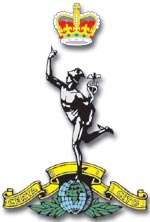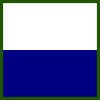216 Parachute Signal Squadron
| 216 (Parachute) Squadron, Royal Signals | |
|---|---|
 | |
| Active | 1959 – Present |
| Country |
|
| Branch |
|
| Type | Airborne communications support |
| Role | Telecommunications and information systems maintenance and support |
| Size | 230 people |
| Part of | 16 Air Assault Brigade |
| Garrison/HQ |
Merville Barracks Colchester, England |
| Nickname(s) | "Airborne Signals" |
| Website |
www |
| Insignia | |
| Drop zone flash |
 |
216 (Parachute) Squadron, Royal Signals (216 (Para) Sigs Sqn or simply, 216) is a Squadron of the British Army's Royal Corps of Signals. It is responsible for installing, maintaining and operating all types of telecommunications equipment and information systems in support of 16 Air Assault Brigade. 216 Parachute Signal Squadron provide OpCIS and TacCIS to the Bde Comd and his staff.
History
216 Parachute Signal (Parachute Brigade Group) was formed on 1st September 1959 before becoming 216 Parachute Signal Squadron in 1965 and deployed into operations in Cyprus, Bahrain, Aden, Borneo, British Guyana and Northern Ireland. In 1977 HQ 16 Parachute Brigade and 216 Parachute Signal Squadron amalgamated to form 6th Field Force Headquarters and Signal Squadron.
216 is the predecessor for the WWII airborne signals unit, 2nd Independent Parachute Brigade Group Signal Company (1943–1945), and post-WWII airborne signals unit, 2nd Independent Parachute Brigade Signal Squadron (1947–1948).[1] 2nd Independent Parachute Brigade Signal Squadron then was reformed to 16th Independent Parachute Brigade Group Signal Squadron (1948–1960).[2]
1981 saw the Signal Squadron re-role, retitling to become 1st Infantry Brigade Headquarters and Signal Squadron (216), losing much of its airborne status. In 1982 members of the Squadron formed part of the Operation Corporate task force to the South Atlantic. The success of the Parachute Regiment during the conflict led to the decision to reinstate the parachute role and 5th Airborne Brigade Headquarters and Signal Squadron (205) came into existence in November 1983. In December 1983 1st Infantry Brigade Headquarters and Signal Squadron (216) relinquished its airborne associations to 205 Signal Squadron and assumed the number 215. In recognition of the historical significance of the number '216' and to mark the 50th Anniversary Year of Airborne Signalling, 205 Signal Squadron was re-titled in October 1991 as 216 Parachute Signal Squadron.
When NATO troops moved into Kosovo in June 1999 the Squadron, as part of 5 Airborne Brigade, were amongst the first troops into the country. Subsequently, part of 24 Airmobile Brigade Headquarters and Signal Squadron (210) deployed into theatre in support of 101 Logistic Brigade. As this was happening, as part of the Strategic Defence Review 16 Air Assault Brigade was about to form from various elements of 5 Airborne Brigade and 24 Airmobile Brigade. Correspondingly, elements of the two brigade signal squadrons formed up on 1 September 1999 in both Colchester and Pristina, Kosovo as 216 Signal Squadron.[3]
In 2006 following an arduous tour of Afghanistan the squadron was handed its Parachute Title by HRH Princess Anne. It is known as 216 (Parachute) Signal Squadron.
Operations
| Operation | Country | Year |
|---|---|---|
| Operation Palliser | 2000 | |
| Operation Essential Harvest | 2001 | |
| Operation Veritas | 2001–2002 | |
| Operation Telic | 2002–2003 | |
| Operation Herrick IV | 2006 | |
| Operation Herrick VIII | 2008 | |
| Operation Herrick XIII | 2010–2011 |
References
- ↑ "216 Parachute Signal Squadron". Airborne Assault: ParaData.
- ↑ "16th Independent Parachute Brigade Signal Squadron". Airborne Assault: ParaData.
- ↑ 216 Parachute Signal Squadron – Squadron History
External links
- Regiment Info on British Army Official Website
- 216 Para Sig Sqn Association